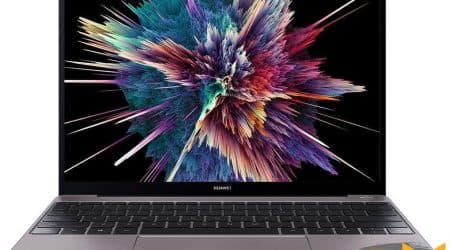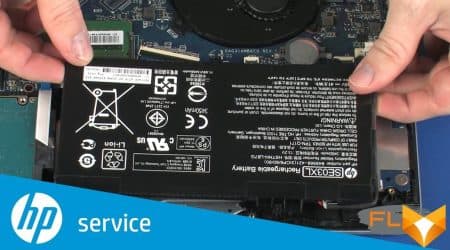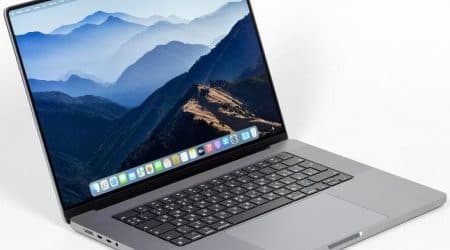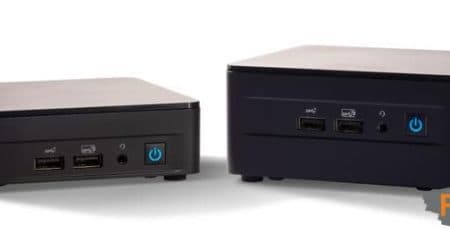In the evolving landscape of computer-based entertainment, many enthusiasts seek to enhance their experience through familiar devices. A reliable input method can significantly influence performance and enjoyment. By incorporating an established tool into the mix, players can achieve a seamless transition between platforms, unlocking new levels of engagement.
This guide dives into the nuances of connecting a renowned gaming interface to a computer system. With various options available, selecting the right approach can streamline the setup process and maximize the overall potential. Embracing this adaptable accessory not only boosts comfort but also enhances precision and responsiveness during competitive play.
Additionally, understanding the various configurations and settings available ensures that every session is tailored to individual preferences. Delving into the intricacies of this integration will empower users, making their experience both enjoyable and effective. Prepare to embark on a journey from the living room to the desktop, transforming familiar clicks into unparalleled adventures.
Connecting Your Xbox Controller to PC
Establishing a connection between a gaming pad and a computer can greatly enhance the overall experience while playing various titles. Whether via a wired connection or wirelessly, the process is straightforward and intuitive, allowing players to immerse themselves in their favorite games effortlessly.
Here are some essential steps to establish the connection:
- Wired Connection:
- Locate a suitable USB cable, preferably the one that comes with the device.
- Plug one end into the gamepad and the other into an available USB port on the computer.
- The system should automatically recognize the device and install necessary drivers.
- Wireless Connection:
- Ensure your computer has Bluetooth capabilities or a wireless adapter.
- Power on the device by pressing the main button.
- Activate pairing mode by holding the sync button until the light starts flashing.
- On your computer, navigate to the Bluetooth settings and scan for new devices.
- Select the appropriate pad from the list and complete the pairing process.
This seamless connection enables players to enjoy a wider range of titles with enhanced control and responsiveness, ultimately improving their gameplay experience.
Installing Necessary Drivers and Software
To ensure a seamless connection and optimal performance of the gaming peripheral, obtaining the appropriate drivers and software is crucial. This enables the device to interact effectively with the operating system, unlocking its full potential for an immersive experience.
Driver Installation
Follow these essential steps to set up the necessary drivers:
- Connect the device to the PC via USB or Bluetooth.
- Allow the operating system to automatically detect the hardware.
- In case of missing drivers, visit the manufacturer’s website to download the latest versions.
- Install the downloaded drivers by following the on-screen instructions.
Additional Software
To further enhance functionality, consider downloading extra software:
- Configuration tools for customized mapping and sensitivity settings.
- Game-specific applications that optimize performance.
- Compatibility packages that ensure support for various titles.
By completing these steps, you’ll establish a reliable and efficient connection, allowing for an enhanced gaming experience.
Setting Up Bluetooth for Wireless Gaming
Establishing a wireless connection enhances the overall experience by providing freedom of movement and a clutter-free environment. This process involves ensuring that both the device and the gaming peripheral are compatible and properly configured to communicate with one another seamlessly.
Start by verifying that the PC supports Bluetooth connectivity. Most modern systems are equipped with this feature, but if unsure, it’s advisable to check the specifications or settings. Once confirmed, enable Bluetooth on the computer through the settings menu.
Next, prepare the gaming accessory for pairing. This typically requires holding down a specific button until an indicator light begins to flash, signaling that the device is in pairing mode. In the Bluetooth settings on the PC, search for available devices; once identified, select the one that corresponds to the gaming accessory to initiate the connection.
If prompted, enter a security code or pin to complete the pairing process. Upon successful connection, a confirmation message will be displayed. The final step is testing the setup within a game to ensure everything functions as expected, allowing for an immersive and responsive playing experience.
Adjusting Controller Configuration and Settings
Fine-tuning the setup and preferences of your gamepad is essential for an optimal experience on PC. This involves personalizing various aspects to ensure comfort and efficiency during gameplay. By making necessary adjustments, players can enhance their performance and enjoy a more engaging interaction with games.
Customizing Key Mappings
A critical aspect of personalization is modifying the key assignments. This allows the user to allocate buttons based on their playstyle, providing quick access to essential functions. Many software tools enable remapping, making it simple to create a layout that feels intuitive. Experimenting with different configurations will help identify the most effective settings.
Adjusting Sensitivity and Dead Zones
Another important factor is the sensitivity of the sticks and triggers. Adjusting these settings affects response time and precision, which can greatly influence gameplay. Additionally, setting appropriate dead zones prevents unintended movements, ensuring more accurate control. Balancing these parameters according to personal preference can significantly enhance overall performance.
Optimizing Game Performance and Responsiveness
Enhancing the experience of playing video games on a personal computer involves several strategies that focus on maximizing efficiency and minimizing delay. By implementing a series of adjustments and settings, players can enjoy smoother gameplay and more precise control over their actions.
To achieve optimal performance, consider the following tips:
- Update Drivers: Ensure that all necessary drivers are current, particularly those related to input devices and graphics cards.
- Adjust Game Settings: Tailor graphics and performance settings within each title to strike a balance between visuals and frame rates.
- Close Background Applications: Terminate unused programs running in the background to free up system resources.
- Monitor System Performance: Use performance monitoring tools to keep an eye on CPU, GPU, and RAM usage to identify bottlenecks.
In addition to these adjustments, consider the physical setup:
- Position the device within a close range of the computer to reduce potential latency.
- Utilize a high-quality USB connection if applicable, as this can enhance responsiveness.
By following these recommendations, the overall responsiveness and enjoyment of the gaming experience can significantly improve, enabling players to perform at their best while immersed in their favorite titles.
Troubleshooting Common Connection Issues
When experiencing difficulties with establishing a seamless link between devices, it is essential to identify and resolve common complications. These challenges may arise from various sources, including hardware settings and software configurations. Understanding potential problems can significantly enhance the user experience and ensure smooth operation.
To assist in diagnosing connection problems, the following table outlines typical issues and their corresponding solutions:
| Issue | Solution |
|---|---|
| Device not recognized | Check USB connections and try different ports. Ensure drivers are up to date. |
| Unstable connection | Make sure the device is close to the receiver. Limit interference from other wireless devices. |
| Input lag | Adjust polling rate settings and ensure optimal performance settings in games are enabled. |
| Battery problems | For wireless options, replace batteries or recharge the device. Check power settings for sleep mode. |
| Software incompatibility | Verify compatibility of the operating system with the necessary software. Update if required. |
By systematically addressing these common concerns, users can improve their overall experience and achieve optimal performance in their gaming endeavors.
Q&A: How to use an xbox one controller on a pc
How can you connect an Xbox Wireless Controller to a Windows 10 or Windows 11 PC using Bluetooth?
To connect an Xbox Wireless Controller to a Windows 10 or Windows 11 PC via Bluetooth, first ensure your controller supports Bluetooth by checking that it’s an Xbox One or Xbox Series X|S model. Turn on the controller by holding the Xbox button until it lights up. Press and hold the pair button on the top of the controller until the Xbox button starts flashing. On your Windows PC, go to Settings > Devices > Bluetooth & other devices and select “Add Bluetooth or other device.” Choose Bluetooth, then select the Xbox controller from the list. Once connected, the Xbox button will remain solid.
What are the steps to connect an Xbox Wireless Controller to your PC using the Xbox Wireless Adapter for Windows?
To connect an Xbox Wireless Controller to your PC using the Xbox Wireless Adapter for Windows, plug the adapter into a USB port on your PC. Turn on your Xbox controller by pressing the Xbox button, then press the pair button on the adapter until the light starts flashing. Next, press and hold the pair button on your controller located on the top until the Xbox button flashes. When the light on both the adapter and controller turns solid, the connection is successful, and your controller is ready for PC gaming.
Can you use an Xbox 360 controller on Windows 10 or Windows 11, and what are the requirements?
Yes, you can use an Xbox 360 controller on Windows 10 or Windows 11, but it requires a different setup compared to newer Xbox controllers. For wired Xbox 360 controllers, simply connect the controller to a USB port on your PC, and Windows will automatically install the necessary drivers. For wireless Xbox 360 controllers, you’ll need an Xbox 360 Wireless Gaming Receiver, which plugs into your PC’s USB port. Press the button on the receiver and the connect button on the controller to sync them. Once connected, the Xbox button will light up, indicating the controller is ready to use.
What are the best ways to connect an Xbox Series X|S controller to a PC, and which method offers the most reliable connection?
There are three main ways to connect an Xbox Series X|S controller to a PC: using Bluetooth, an Xbox Wireless Adapter for Windows, or a USB cable. Bluetooth offers convenience for wireless play, while the Xbox Wireless Adapter provides a more stable connection with lower latency, especially for gaming. Alternatively, you can connect the controller using a USB-C cable for a wired connection, which ensures no input lag. The most reliable connection for intense gaming sessions is through the Xbox Wireless Adapter or a direct USB connection, providing consistent performance without interference.
How can you connect an Xbox One wireless controller to your PC for gaming?
To connect an Xbox One wireless controller to your PC, you can use Bluetooth, a USB cable, or an Xbox Wireless Adapter. For a Bluetooth connection, turn on the controller by pressing the Xbox button, then hold the pair button until the Xbox button starts flashing. On your PC, go to Settings > Devices > Bluetooth & other devices, select “Add Bluetooth or other device,” and choose your Xbox controller from the list. If you prefer a wired connection, use a micro-USB cable to connect the controller directly to the PC, which will also keep it charged while you play.
What are the steps to connect an Xbox Series controller to a PC wirelessly?
To connect an Xbox Series controller to a PC wirelessly, you can use either Bluetooth or the Xbox Wireless Adapter for Windows 10. For Bluetooth, ensure your PC supports Bluetooth connections, then turn on the Xbox controller by pressing the Xbox button. Press and hold the pair button on top of the controller until the light flashes. On your PC, go to Settings > Bluetooth & other devices, click “Add Bluetooth or other device,” and select the Xbox controller when it appears. The connection will establish when the Xbox button stops flashing.
What options are available to connect an Xbox controller to your Windows 10 or 11 PC, and which method provides the best performance?
You can connect an Xbox controller to your Windows 10 or 11 PC using Bluetooth, an Xbox Wireless Adapter, or a USB cable. Bluetooth offers convenience without wires but may have slight input lag depending on the PC and controller distance. The Xbox Wireless Adapter provides a more stable and responsive connection, specifically designed to work with Xbox accessories. For the most consistent performance, a direct connection using a micro-USB or USB-C cable is recommended, as it eliminates latency and ensures the controller stays charged during gameplay.
How do you use an Xbox Elite controller with your PC for the best gaming experience?
To use an Xbox Elite controller with your PC, you can connect via Bluetooth, Xbox Wireless Adapter, or a USB cable. For Bluetooth, make sure your PC is Bluetooth-enabled, then press the Xbox button on the controller to turn it on and hold the pair button until it starts flashing. On your PC, go to Bluetooth settings, select “Add Bluetooth or other device,” and choose the Xbox Elite controller. For a wired connection, connect the controller to your PC using a micro-USB or USB-C cable, depending on the version. The Elite controller’s customizable buttons and paddles make it a great choice for enhancing your PC game experience.





